Hyperspectral Satellites and System Design
Original price was: ₹15,078.00.₹12,062.40Current price is: ₹12,062.40.
ISBN: 9780367217907
Author/Editor: Shen-En Qian
Publisher: CRC Press
Year: 2020
1 in stock (can be backordered)
Description
Hyperspectral Satellites and System Design is the first book on this subject. It provides a systematic analysis and detailed design of the entire development process of hyperspectral satellites. Derived from the author’s 25-year firsthand experience as a technical lead of space missions at the Canadian Space Agency, the book offers engineers, scientists, and decision-makers detailed knowledge and guidelines on hyperspectral satellite system design, trade-offs, performance modeling and simulation, optimization from component to system level, subsystem design, and implementation strategies. This information will help reduce the risk, shorten the development period, and lower the cost of hyperspectral satellite missions.
Additional information
| Weight | 1.2 kg |
|---|
Product Properties
| Year of Publication | 2020 |
|---|---|
| Table of Contents | Introduction of Hyperspectral Satellites Spaceborne Spectroscopy and Imaging Hyperspectral Imaging Approaches Dispersive Elements Based Approach Whiskbroom Mode Pushbroom Mode Spectral Filters Based Approach Linear Variable Filters On-chip Stepped Fabry-Perot Filters Electronically Tunable Filters Snapshot Hyperspectral Imagers Multi-Aperture Filtered Camera Coded Aperture Snapshot Spectral Imager Image Mapping Spectrometry Snapshot Hyperspectral Imaging Fourier Transform Spectrometer On-chip Fabry-Perot Filters Hyperspectral Imaging from Aircraft to Spacecraft Scientific Rationale for Hyperspectral Remote Sensing History of Development of Airborne Hyperspectral Imagers First Airborne Hyperspectral Imager - AIS Airborne Imaging Spectrometer Development between 80's and 90's Early Imaging Spectrometer Development in Canada Planned NASA Orbiting Imaging Spectrometers in 1990's Two Major Airborne Hyperspectral Imager Developments Since the Beginning Difference between Airborne and Spaceborne Hyperspectral Imaging AVIRIS and Its Next Generation CASI and Its Spectrally and Spatially Extended Siblings Reference Overview of Hyperspectral Sensors on Orbits Spaceborne Hyperspectral Sensors at a Glance Ultraviolet and Visible Imagers and Spectrographic Imagers (UVISI) HyperSpectral Imager (HSI) for the LEWIS mission Moderate Resolution Imaging Spectroradiometer (MODIS) on Terra and Aqua Satellites Hyperion onboard EO-1 Mission Compact High-Resolution Imaging Spectrometer (CHIRS) on PROBA Satellite Medium-Resolution Imaging Spectrometer (MERIS) onboard ESA's ENVISAT Visible and Infrared Thermal Imaging Spectrometer (VIRTIS) for Rosetta, Venus-Express and NASA-Dawn Planetary Missions Compact Reconnaissance Imaging Spectrometer for Mars (CRISM) Moon Mineralogy Mapper (M3) Fourier Transform Hyperspectral Imager (FTHSI) onboard Chinese Environment Protection Satellite HJ-1A Hyperspectral Imager (HySI) onboard Indian Mini Satellite-1 (IMS-1) Advanced Responsive Tactically Effective Military Imaging Spectrometer (ARTEMIS) onboard TacSat-3 Hyperspectral Imager for the Coastal Ocean (HICO) onboard the International Space Station Visible and Near-infrared Imaging Spectrometer (VNIS) aboard Chang'E 3 Spacecraft Ocean and Land Color Imager (OLCI) on Sentinel-3A Miniature High-Resolution Imaging Spectrometer on GHGSat-D Aalto-1 Spectral Imager (AaSI) on a 3U Nanosatellite DLR Earth Sensing Imaging Spectrometer (DESIS) on the International Space Station HyperScout Hyperspectral Camera on a 6U Nanosatellite (GomX-4B) Advanced Hyperspectral Imager (AHSI) on Chinese Gaofen-5 Satellite Italian Hyperspectral Satellite PRISMA Hyperspectral Imager Suite (HISUI) German Hyperspectral Imager for Environment Mapping and Analysis (EnMap) Moons and Jupiter Imaging Spectrometer of ESA's Jupiter Icy Moons Explorer Reference Overview of Applications of Hyperspectral Satellites in Earth Observations Remote Sensing Applications from Multispectral to Hyperspectral Imaging Agriculture and Precision Farming Crop Stress Mitigation and Site Specific Management Nutrient Deficiencies Water Content in Crop Canopy and Soil Weed Detection and Mapping Mapping of Crop Disease and Insect Damage Crop Productivity and Yield Soil Quality / Erosion Agro-environmental Health Monitoring and Forecasting Environment and Sustainability Wetland Applications Environmental Geology Land Degradation and Soils Mapping Climate Change Marine, Coastal and Inland Waters Applications in Marine Environments Impacts of Land Use and River Runoff Eutrophication and Harmful Algae Blooms in Lakes, Rivers and Coastal areas Fisheries Applications Land-Related Water Applications Coastal Zone Environment and Change Detection Forestry Applications Hyperspectral Forest Products Forest Inventory Forest Chemistry Kyoto Products Geology and Mineral Exploration Lithologic Mapping Geobotanical Mapping Defense and Security Target Detection Spectral Unmixing Based Target Detection Stochastic Detection Algorithms Terrain Mapping Soil Characterization and Disturbance Marine Applications Near-shore Bathymetry Detection of Landmines Using VNIR Hyperspectral Imagery Using SWIR Hyperspectral Imagery Using TIR Hyperspectral Imagery and Combined Sensing Reference Mission Concept and Trade-off Study Hyperspectral Satellite configuration Hyperspectral Satellite Earth Orbits Low Earth orbits Sun-synchronous orbits Geosynchronous and Highly Elliptical Orbits Mission development Phases Analysis of Users Needs Understanding Users' Needs Environment Atmospheric Quality Monitoring Fresh Water Quality Monitoring Wetlands Habitat Monitoring Land Reclamation Monitoring Coastal and Inland Waters Enhanced Water Quality Monitoring Water Clarity Monitoring and Assessing Harmful Algal Blooms Agriculture Annual Crop Inventory Report Crop Health Monitoring Crop Insurance Precision Farming Forestry and Mining Forest Inventory Management Monitoring and Management of Forest Health Forest Biomass Estimates Environmental Impact Monitoring of Mining Operations Lithological and Mineral Mapping Defence and Security A Hyperspectral Mission Concept Case Study Mission Description and Requirements Orbit and Coverage Trade-Off Orbit Selection Number of Satellites Orbit Altitude Selection Hyperspectral Imaging Technology Trade-Off Trade-Off of Data Collection, Compression, Storage, and Downlink Mission Concept Overview Space Segment Ground Segment System Calibration Concept of Operation Payload Concept Optical Unit Instrument Control and Onboard Data Handling Spacecraft Concept Selection of Spacecraft Platform Spacecraft Platform Structure Attitude and Orbit Control Subsystem Power Subsystem Thermal Control Subsystem Telemetry/Telecommand and Data Downlink Onboard Controller and Data Handling Propulsion Launch Options Launch Requirements 1-Level Launchers 2-Level Launchers Reference Optical System and Design Optical System Overview Instrument Front End Functions Input Port Cover External Baffles Pointing Mirrors and Gimbals Spectral Calibration Source Radiometric Calibration Source Fore-optics Telescope Slit Assembly Internal Baffles Spectrometers and Associated Detector Arrays VNIR Spectrometer VNIR Detector Array(s) SWIR Spectrometer SWIR Detector Array(s) Overlapping spatial and spectral sampling Preamplifiers Focal Plane Cooling Panchromatic Camera Panchromatic Linear Detector Read out Electronics VNIR Array Readout SWIR Array Readout Panchromatic Readout Instrument Structure Optical Design Considerations Telescope Design Considerations Spectrometer Design Considerations Telescope Design Refracting Telescopes Reflecting Telescopes Catadioptric Telescopes Telescope Design Examples Telescope A - A Non-coaxial TMA Telescope B - An On-axis TMA Telescope C - A Two-Mirror Compact Telescope Slit Scan Spectrometers Principle of Dispersive Spectrometers Grating Spectrometers Ebert-Fastie Spectrometer Czerny-Turner Spectrometer Paschen-Runge Spectrometer and Rowland Spectrometer Prism Spectrometers Two Typical Spectrometers Used in Spaceborne Hyperspectral Imagers Offner Spectrometers Dyson Spectrometers Comparison Dyson spectrometer vs Offner spectrometer Spectrometer Design Examples A Dyson Spectrometer for VNIR A Dyson Spectrometer for SWIR A Grating Spectrometer for VNIR A Grating Spectrometer for SWIR A Prism Spectrometer for SWIR A Dyson Spectrometer for VNIR with a Larger Entrance Pupil Comparison of the Design Examples Slit Assembly and Beam Splitter Distributing Light Using a Slit Assembly Distributing Light Using a Beam Splitter Depolarizer Polarization Sensitivity MERIS Type Depolarizer Dual Babinet Depolarizer and Variant Examples of Depolarizers in Space Missions Imaging Spectrometer Optical Design Examples Imaging Spectrometer System 1 System 1 Overview System 1 VNIR Grating Spectrometer System 1 SWIR Prism Spectrometer Imaging Spectrometer System 2 System 2 Overview System 2 VNIR Grating Spectrometer System 2 SWIR Prism Spectrometer Imaging Spectrometer System 3 System 3 Overview System 3 VNIR Grating Spectrometer System 3 SWIR Prism Spectrometer Summary of Three Designed Imaging Spectrometer Systems Reference Focal Plane Arrays From Instrument Requirements to Focal Plane Array Specification CCD FPAs CMOS FPAs Monolithic CMOS FPAs Hybrid CMOS FPAs Comparison CCD versus CMOS FPAs SWIR FPAs HgCdTe FPAs InGaAs FPAs HgCdTe versus InGaAs for SWIR FPAs Hyperspectral FPAs Considerations of FPA Selection Detector pixel size Quantum Efficiency Dark Current Dark Current Non-Uniformity Photo-Response Non-uniformity Readout Noise Reference Hyperspectral Imager System Performance Modelling Configuration of Exemplary Hyperspectral Imaging Systems Telescope Spectrometer Detector Arrays Signal-to-Noise Ratio Simulation Signal-to-Noise Ratio Model Signal Model Noise Model Saturation Signal Model Assumptions for SNR Simulation Input Radiance Quantum Efficiency Detector Parameters Grating Efficiency Optical Throughput Spectral Dispersion 1/f Noise and Electronics Noise Ageing Degradation Results of SNR Simulation Dual Dyson Hyperspectral Imagers Dual Offner Hyperspectral Imagers Dual Prism Hyperspectral Imagers - Case 1 Dual Prism Hyperspectral Imagers - Case 2 Dual Prism Hyperspectral Imagers - Case 3 Summary of SNR Simulation Modelling Modulation Transfer Function (MTF) MTF Model Assumptions for MTF Modelling MTF Results Modelling Spectral Response Spectral Response Model Spectral Response Assumptions Spectral Response Results Point Spread Function Analysis Point Spread Function Model Point Spread Function Modeling Results Reference Thermal and Mechanical Design Basics of Thermal and Mechanical Design Thermal Environment Sunlight Albedo Earth Infrared Interplanetary Environments Passive Thermal Control Surface Finish Insulation Radiator Active Thermal Control Heater Thermoelectric Cooler Stirling Cryocooler and Pulse Tube Cryocooler Heat Pipe Thermal Design Analysis Thermal Design Process Overview Hyperspectral Satellites Thermal Design Considerations Hyperspectral Sensor Thermal Design Examples Hyperion Thermal Design CRISM Thermal Design EnMAP Thermal Design Structural Analysis Mechanisms Thermal and Structure Design Examples VIRTIS for Three Planetary Missions VIRTIS Thermal Design VIRTIS Structure Design PRISMA Hyperspectral Imager MAJIS for Exploring Galilean Moons of Jupiter MAJIS Thermal Design MAJIS Structure Design Reference In-flight Calibration Design Importance of Onboard Calibration In-flight Calibration for Monitoring Instrument Behavior Instrument Calibration and Validation Relationship Between Spectral and Radiometric Calibration Review of Onboard Calibration Systems MERIS Hyperion MODIS SCIAMACHY VIRTIS PRISMA EnMAP HISUI Onboard Radiometric Calibration Techniques Solar-Based Calibration Solar Diffuser Solar Diffuser with Ratioing Radiometer Integrating Sphere with Solar Illumination Radiative Source-Based Calibration Diffuser Panel with Lamps Integrating Sphere with Lamp Illumination Light Emitting Diodes and Laser Diodes Blackbody Vicarious Calibration Advances of Vicarious Calibration Ground-Based Vicarious Calibration Lunar Calibration Stable Deserts Sun Glint High Altitude Clouds Molecular Scattering over Oceans Offset Correction Offset Signal of Detector Arrays Frame Method Masked Pixel Method Summary of Radiometric Calibration Techniques Onboard Spectral Calibration Techniques Onboard Spectral Calibration Strategy Filtered QTH Spectral Line Sources Monochromator Doped Spectralon Diffuser Atmospheric/Solar Lines LED Spectral Line Sources Etalon Summary of Spectral Calibration Techniques Concept Design Examples of Onboard Calibration System Concept Design 1 Concept Design 2 Concept Design 3 Reference Instrument Control and Onboard Data Handling Subsystem Functions of Instrument Control and Onboard Data Handling Subsystem Configuration of Instrument Control and Onboard Data Handling Subsystem Processing, Formatting and Control Units (PFCU) Architecture of PFCU Data Acquisition Instrument Data Acquisition Ancillary Data Virtual Channel Multiplexing Onboard Data Compression VIRTIS Lossless and Lossy Data Compression CRISM Data Editing and Lossless Compression M3 Lossless Data Compression HISUI Onboard Lossless Data Compression EnMap Onboard Data Compression Vector Quantization Based Near-Lossless Compression CCSDS Recommended Data Compression Standards Transmission Chain Control and Monitoring Timing Generation Redundancy and Packaging Mass Memory Unit Proximity Electronics and Service Module Electronics FPAs Proximity Electronics Service Module Electronics Electrical Interfaces Cross-Strapping Instrument Interfaces MMU Interfaces X-/Ka-Band Downlink Interfaces Spacecraft Bus Interfaces Reference Ground Segment Overview of Ground Segment Ground Stations Mission Control Centers Ground Networks Remote Terminals Hyperspectral Data Product Level Ground Segment Context Interface to Space Segment Spacecraft Commands Imagery and Ancillary Data Instrument Calibration Parameters Telemetry Interface to Calibration Support Data Sources Interface to Customers Browsing Dialogue Data Orders Product Orders Order Acknowledgment Level 1B Products Order Results Ground Segment Functional Decomposition Order Management Acquisition Planning Command and Control Control Communication Link Data Communication Link Preprocessing Archive Calibration Product Processing Cataloguing Catalogue Operation and Data Flow between Functions Order Management to Acquisition Planning Feasibility Check Feasibility Result Collection Order Collection Order Result Acquisition Planning to Command and Control Acquisition Plan Acquisition Plan Result Resource Constraints Predicted Ephemeris Command and Control to Control Communication Link Contact Setup Dialogue Spacecraft Commands Instrument Calibration Parameters Telemetry Acquisition Planning to Data Communication Link Reception Setup Dialogue Reception Result Acquisition Planning to Preprocessing Downlink Plan Data Communication Link to Preprocessing Framed Imagery Data Preprocessing to Archive Preprocessed Data Archive to Cataloguing Preprocessed Data Calibration Parameters Cataloguing to Acquisition Planning Archive Report Cataloguing to Catalogue Catalogue Update Archive to Product Processing Preprocessed Data Calibration Parameters Order Management to Product Processing Production Order Production Order Result Product Processing to Calibration Level 1A Product Calibration to Command and Control Spacecraft Calibration Parameters Calibration to Archive Calibration Parameters Operational Scenarios Ordering New Data Preliminary Events Customer Interaction Planning, Command and Control Space Segment Control Data Reception Preprocessing, Archiving and Cataloguing Completing the Order Ordering Level 1B Data Product Customer Interaction Product Processing Completing the Order Conducting Onboard Instrument Calibration and Generating Calibration Coefficients Reference On-Ground Calibration and Characterization Rationale of On Ground Calibration and Characterization Calibration and Characterization Types of Hyperspectral Sensors Radiometric Spectral Geometric Spatial Co-registration Spatial Resolution and Modulation Transfer Function Linearity Uniformity Rectilinearity Polarization Sensitivity Stray Light Signal-to-Noise Ratio Analysis of Spectral and Spatial Error Sources Background of Spectral and Spatial Error Sources Thermal Drifts Mirror Substrates and Prism Thin Film Coating Instabilities Gratings Radiation Mirror Substrates Prism Glass Gratings Color Glass Filters and Thin Film Coatings Contamination and Atomic Oxygen Micrometeorite Damage Spectral Calibration Requirement Analysis Spectral Linearity Temperature Sensitivity Simulation of Spectral Calibration An Example of Scene-Based Spectral Calibration Prelaunch Calibration Considerations with respect to Ground-Based Absolute Calibration An example - MODIS Prelaunch Calibration Absolute and Relative Radiometric Calibration Reference Radiometric Conversion and Data Correction Conversion to At-Sensor Radiance and Top-of-Atmosphere Reflectance Process of Conversion from Raw Data to Radiance and Reflectance Radiometric Response Modeling of a Hyperspectral Sensor Conversion to At-sensor Radiance MERIS Conversion to At-sensor Radiance Hyperion Level 0 and 1 Processing to Generate At-sensor Radiance EnMAP Level 0 and 1 Processing to Generate At-sensor Radiance Conversion to Top-of-Atmosphere Reflectance Smile Detection and Correction Spectral Distortion - Smile Smile Correction Using Atmospheric Absorption Feature Matching Keystone Detection and Correction Spatial Distortion - Keystone Measuring Keystone Using Interband Correlation of Spectral Features De-striping and Noise Reduction De-striping Random Noise Reduction A Case Study of Data Correction and Its Effectiveness Test Data Set Data Processing Procedure Evaluation Results of Statistical Measures Evaluation Results Using a Target Detection Application Reference Atmospheric Correction Atmospheric Effects on Hyperspectral Data Statistics-Based Atmospheric Correction Approaches Empirical Line Method Internal Average Relative Reflectance Flat Field Correction Cloud Shadow Method Dense Dark Vegetation Algorithm Radiative Transfer Modeling for Physics-Based Atmospheric Correction Radiative Transfer Modeling Based Methods for Land Scenes Atmosphere Removal Algorithm (ATREM) Fast Line-of-sight Atmospheric Analysis of Spectral Hypercubes (FLAASH) High-accuracy Atmospheric Correction for Hyperspectral Data (HATCH) Atmosphere Correction Now (ACORN) 5D LUT Approach in Imaging Spectrometer Data Analysis System (ISDAS) Atmospheric and Topographic Correction (ATCOR) Radiative Transfer Modeling Based Methods for Water Scenes Atmospheric Correction over Optically-Complex Water Scene Black-Pixel Assumption NIR Algorithm NIR Similarity Spectrum Algorithm NIR-SWIR Algorithm with Turbid Water Index Self-Contained Atmospheric Parameters Estimation Modified NIR Black-Pixel Method Direct Inversion Approach Using Neural Netwo |
| Author | Shen-En Qian |
| ISBN/ISSN | 9780367217907 |
| Binding | Hardback |
| Edition | 1 |
| Publisher | CRC Press |
You must be logged in to post a review.

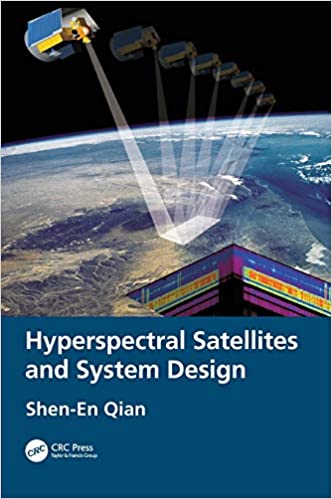
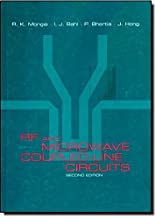
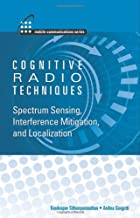
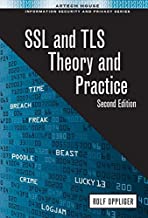
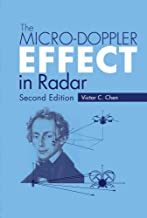
Reviews
There are no reviews yet.